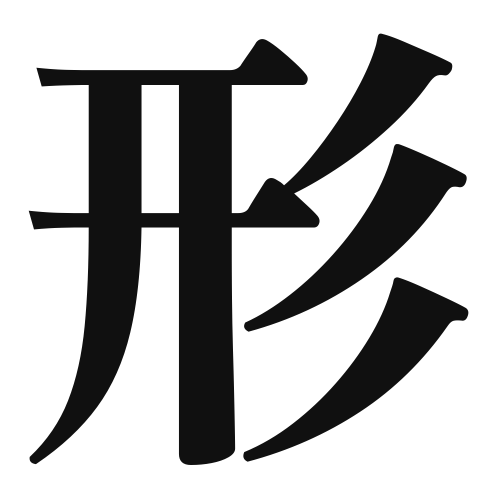1. Overview of Meaning
The kanji “形” (pronounced “katachi” or “kei”) means “shape” or “form.” It refers to the physical appearance or structure of an object, as well as abstract concepts of form.
2. Formation and Radicals
Formation of the Kanji: The kanji “形” is a 形声文字 (phonetic-ideographic character), which combines a meaning component and a phonetic component. The left part “亻” (a variant of “人,” meaning “person”) suggests a connection to human form, while the right part “刑” provides the phonetic sound.
Radical: The radical for “形” is “亻,” which relates to people or human actions.
3. Examples of Usage
Common Words and Phrases: Some frequently used words that include “形” are:
- 形状 (けいじょう, “keijou”) – shape, form
- 形見 (かたみ, “katami”) – a keepsake or memento
- 形態 (けいたい, “keitai”) – form, shape, or type
Example Sentences in Daily Conversation:
- この箱の形は面白いです。 (このはこ の かたち は おもしろい です。) – The shape of this box is interesting.
- 彼女は美しい形をしています。 (かのじょ は うつくしい かたち を しています。) – She has a beautiful form.
4. Synonyms and Antonyms
Similar Kanji: A similar kanji is “姿” (し, “sugata”), which also means “form” or “figure,” but it often emphasizes the appearance or figure of a person or object.
Antonyms: An antonym of “形” is “無形” (むけい, “mukei”), which means “formless” or “shapeless.”
5. Cultural and Historical Background
Connection to Japanese Culture: The concept of “形” is significant in Japanese aesthetics, where the form of an object can convey beauty and meaning. Traditional arts, such as pottery and calligraphy, emphasize the importance of shape.
Proverbs and Idioms: One common saying is “形あるものは必ず壊れる” (かたち ある もの は かならず こわれる), which translates to “Everything that has form will eventually break,” reflecting the transient nature of physical existence.
